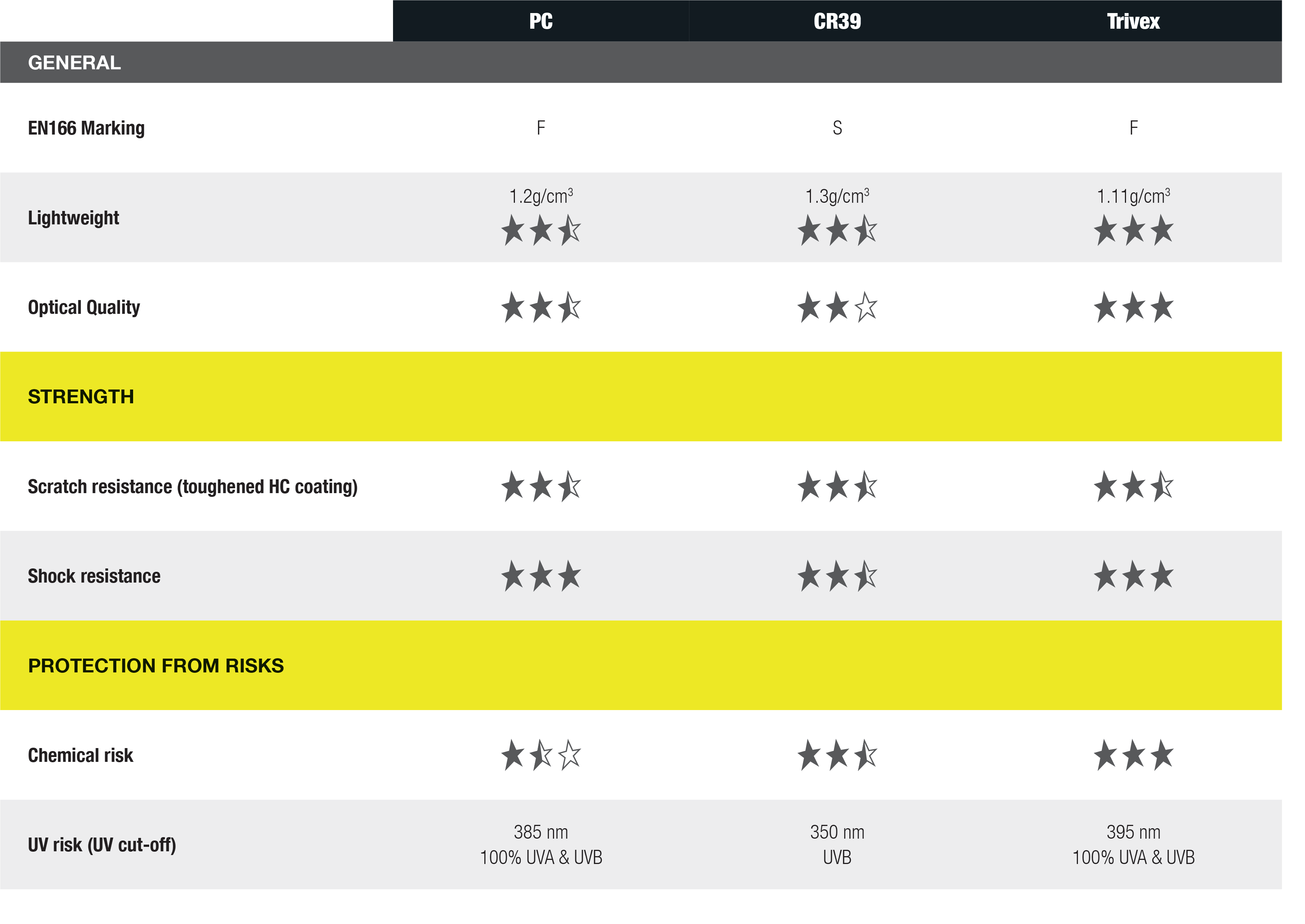Rischi professionali:
Valutali correttamente per selezionare la protezione adeguata
Valutare i rischi professionali è il primo passo per redigere la politica aziendale sulla salute e sicurezza.
La selezione della protezione oculare è parte del tuo dovere come datore di lavoro. È importante identificare chiaramente i tipi di rischi presenti per fornire a ciascun dipendente l’equipaggiamento adeguato e verificare che i rischi, le direttive, le normative e le marcature sulla protezione siano tutte coerenti tra loro.
Per aiutarti in questo compito, il nostro reparto ottica ha selezionato la migliore tecnologia e l’ha inclusa nella nostra offerta EXCELLENCE: materiali per lenti, qualità del design, rivestimenti e toni per proteggere e ottimizzare la vista dei tuoi dipendenti.
MATERIALE DELLE LENTI
POLICARBONATO
La caratteristica principale del policarbonato è la sua resistenza agli impatti. Questo materiale è di gran lunga il più resistente di tutti. Il policarbonato è il 10% più sottile del vetro e il 15% più sottile del CR39. Tuttavia, è una plastica morbida e quindi si graffia facilmente.
Un trattamento antigraffio viene applicato di serie per risolvere questo problema. Questo materiale è particolarmente consigliato per la protezione sul posto di lavoro.
Il policarbonato ha inoltre il vantaggio di assorbire tutti i raggi ultravioletti da 280 nm a 380 nm (99,99%).
Lens markings = 1FCE
European standards EN166 - EN170 - EN172
Rating: 1.59
CR39
Questa è una lente in resina organica, più forte delle lenti in vetro e 50% più leggera, che assorbe una parte dei raggi ultravioletti.
D'altra parte, si graffiano più facilmente. Per ovviare a questo, viene applicato un rivestimento duro sulla lente. A parità di potenza, sono più spesse delle lenti in vetro o policarbonato.
Lens markings = 1SCE
European standards EN166 - EN170 - EN172
Rating: 1.50
TRIVEX
Il Trivex® offre la resistenza del policarbonato e la qualità ottica del CR39. Più durevole del CR39 e altamente resistente ai prodotti chimici, è anche uno dei materiali più leggeri (1,11 g/cm³) e blocca il 100% dei raggi UVA/UVB.
Tuttavia, è più costoso e ha un intervallo di correzione più ristretto rispetto al CR39 o al policarbonato.
Lens markings =
1FCE (Anti-reflects and B-ZEN)
1FKCE (Hard Coating)
1 F KN CE (PLATINUM)
European standards
EN166 - EN170 (clear lenses)
EN166 - EN172 (tinted and photochromic lenses)
Rating: 1.53

